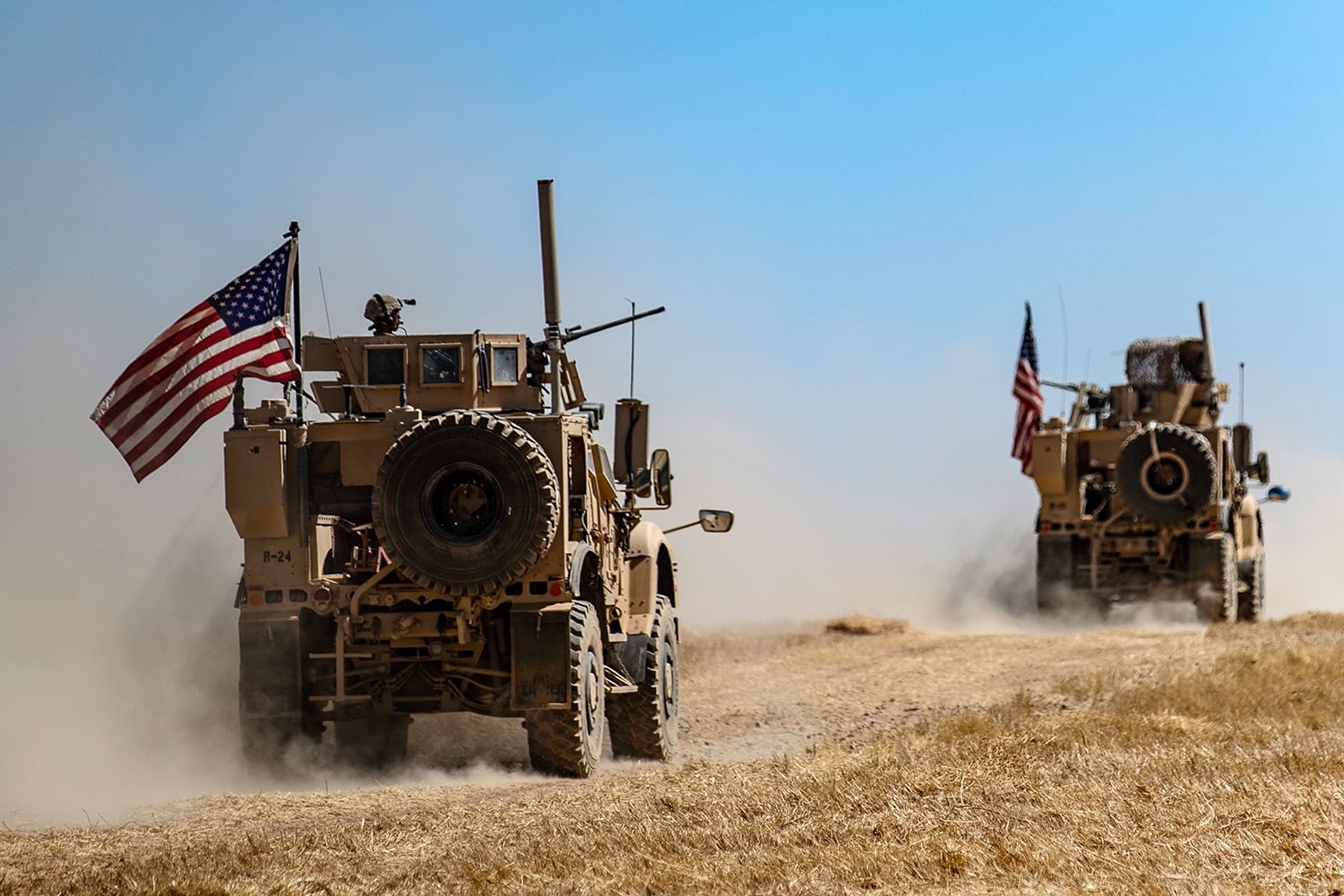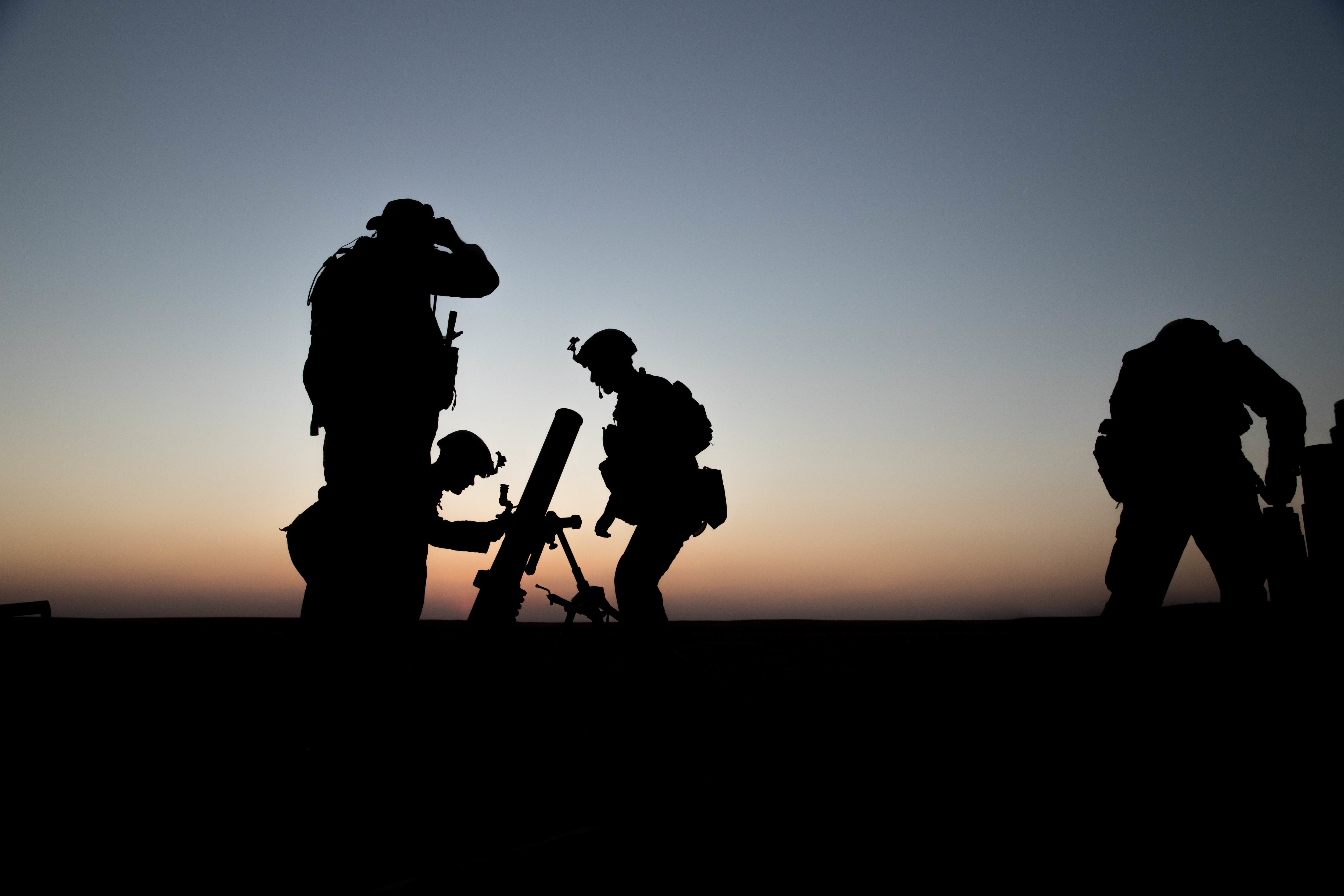American troops and former U.S. officials believe a Turkish artillery strike on Friday that landed about 300 meters from a U.S. commando outpost near the Syrian city of Kobani was done deliberately.
No U.S. troops were injured in the strike, but U.S.-backed Syrian Democratic Forces said American commandos temporarily withdrew from their observation post on Mishtanur hill near Kobani and returned on Saturday.
A senior U.S. military official told Military Times on Friday that the incident was not an attack by Turkish forces, but some U.S. troops, former senior U.S. officials and artillery veterans say that the attack appears to be intentional.
CNN’s Barbara Starr reported, citing a U.S. official, that the U.S. has not come to a final determination on whether the Turkish artillery strike was deliberate.
RELATED

According to the Washington Post, an Army officer with knowledge of the situation said that multiple 155 mm artillery rounds had been fired near the U.S. outpost landing on both sides of the base with a “bracketing effect.”
Gen. Mark Milley, chairman of the Joint Chiefs of Staff, told reporters at the Pentagon Friday that Turkey had the locations of U.S. forces “down to explicit grid coordinate detail.”
With knowledge of the locations of U.S. forces , former U.S. Army Europe commander retired Lt. Gen. Mark Hertling, tweeted that the positions of U.S. forces should have been plugged into artillery fire control computers as “no fire areas,” or NFAs.
Hertling tweeted that the either Turkish “artillery soldiers were incompetent, or this was a purposeful act to send a message to U.S. and SDF/Kurds. Turkey fired on a NATO ally."
The former American envoy for the anti-ISIS coaltion Brett McGurk echoed those sentiments.
“Turkish forces have fired on a declared U.S. military outpost in northern Syria. Turkey knows all of our locations down to the precise grid coordinate,” McGurk tweeted Friday.
A senior enlisted U.S. artillery soldier told Military Times that the NFAs should have been clearly marked by a fire direction officer, “especially when firing in an area with high chance collateral damage.”
The soldier, who spoke to Military Times on condition of anonymity, said “in NATO and Western armies we follow a very strict crew drill procedures before firing artillery both in training and combat.”
The Turkish strikes he said, appeared deliberate, or at least “they didn’t care about the American presence” in the area.
Juan Gonzales, a former artillery sergeant in the Marines, told Military Times that he didn’t think the attack was an accident, and explained that if the fire direction center, or FDC “knew and their fire controls computers were programmed properly there is no excuse.”
The FDC helps compute targeting and direction of fire, and there is typically one FDC for a battery of six guns.
RELATED

But Gonzales also explained that he has worked with a lot of other countries and seen a lot of incompetence in the field of artillery.
“Turkey has not been a great ally for a while now,” Gonzales said.
“The NFAs would have been plugged in and the fire direction center should have known — they very possibly and almost certainly did know, but chances are they didn’t care,” he said.
Ryne Ainsworth, a Marine veteran who served as a artillery fire direction control man, told Military Times that the Turkish artillery unit would have to input the grids of U.S. positions in the Advanced Field Artillery Tactical Data System, or AFATDS, with all the no fire areas marked.
The AFATDS is a fire support command and control system used by the Marines and Army.
“But it would be up to the individual battalions to make sure their tables of fire are followed,” he said.
Ainsworth said the Turkish strike near the U.S. position looked intentional.
“Artillery requires very accurate data. You know what your shooting at through very specific procedures,” he said.
If the strikes are deliberate, what does Turkey stand to gain by shooting at a NATO ally?
Turkey has long been frustrated with America’s assistance to its anti-ISIS partner force known as the SDF.
Among the ranks of the SDF is a Kurdish militant group known as the YPG. Turkey believes YPG fighters are an armed wing of the internationally designated terrorist group the Kurdistan Workers’ Party, or PKK.
Turkish President Recep Tayyip Erdoğan announced the start of military operations to counter the U.S.-backed Kurdish force. Turkey claims its incursion into Syria will not stretch beyond 30 km.
Michael Fonda, a Marine veteran who served in the first battle of Fallujah, Iraq, told Military Times that Turkey is trying to “smoke” special operations forces out of Kobani.
Fonda volunteered to fight with the YPG against ISIS militants in Syria in 2015.
“They [Turkey] know they can’t siege Kobani with U.S. forces present,” Fonda said. “If Kobani falls, all of Rojava falls.” Rojava refers to the semi-autonomous governing region in northern Syria.
Fonda said he sees President Donald Trump’s decision to withdraw a handful of special operators from northern Syria as a betrayal to the Kurds who fought and died to clear ISIS from the region.
“I don’t understand how these special operations guys are able to live with themselves just sitting in their bases doing nothing,” he said.
Turkish military operations continued unabated into the fourth day Saturday. SDF forces repeated their calls for a no-fly zone and said a number of civilians had been killed in fighting.
Newsweek first reported the Turkish artillery strike near the U.S. position in Syria.
Shawn Snow is the senior reporter for Marine Corps Times and a Marine Corps veteran.




